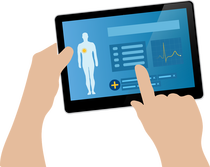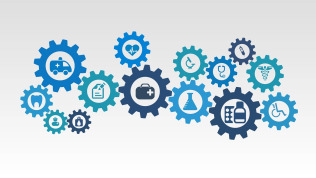Non-stress tests (NSTs) are the current standard of care for monitoring high-risk pregnancies. Intended to reduce the risk of stillbirths, these tests are for those who have one or more risk factors, whether they be maternal, fetal or obstetric complications.
Currently, these tests can be very time-consuming for patients. NSTs involve attaching the mother to fetal and contraction monitors to watch the fetal heart rate tracing and uterine activity. However, many rural and remote areas don’t have ready access to NSTs. Consequently, mothers sometimes travel up to several hours each way to get to our facility for their NST appointments once or twice a week. Once they arrive, there’s the usual wait time, the 30-60 minute testing process, plus an additional wait time for the test to be interpreted by a staff member and a clinician. These appointments, on top of any additional prenatal visits the mothers have scheduled, can therefore add up to a considerable amount of time, even for patients who live nearby.
Continue reading →


 Driving toward value-based care first requires a healthy understanding of the environment in which we are operating. Though regularly criticized, the U.S. healthcare system is actually strong: we have some of the world’s best hospitals and doctors. Individual service lines can provide attentive and effective care, whether it is cardiology, endocrinology or oncology.
Driving toward value-based care first requires a healthy understanding of the environment in which we are operating. Though regularly criticized, the U.S. healthcare system is actually strong: we have some of the world’s best hospitals and doctors. Individual service lines can provide attentive and effective care, whether it is cardiology, endocrinology or oncology. The healthcare IT industry enters 2018 with a lot of potential, along with the need to overcome structures that have historically stunted progress. What is on our health IT wish list? AirStrip is feeling optimistic about the industry’s direction in terms of broader collaboration for building up
The healthcare IT industry enters 2018 with a lot of potential, along with the need to overcome structures that have historically stunted progress. What is on our health IT wish list? AirStrip is feeling optimistic about the industry’s direction in terms of broader collaboration for building up  This past year, 2017, has been a challenging year for many industries, and healthcare is certainly no exception. Not only are there major challenges connected to an increasingly aging population and outdated healthcare infrastructure, but the industry is also adapting to the policies associated with a new presidential administration. While
This past year, 2017, has been a challenging year for many industries, and healthcare is certainly no exception. Not only are there major challenges connected to an increasingly aging population and outdated healthcare infrastructure, but the industry is also adapting to the policies associated with a new presidential administration. While  The number of quality initiatives is rapidly rising in the healthcare industry as stakeholders shift their focus toward the value of patient care. In addition, with the recent implementation of the Medicare Access and CHIP Reauthorization Act (MACRA), the rules surrounding healthcare reimbursement are being rewritten, incentivizing healthcare providers to prioritize the quality of patient visits over the quantity.
The number of quality initiatives is rapidly rising in the healthcare industry as stakeholders shift their focus toward the value of patient care. In addition, with the recent implementation of the Medicare Access and CHIP Reauthorization Act (MACRA), the rules surrounding healthcare reimbursement are being rewritten, incentivizing healthcare providers to prioritize the quality of patient visits over the quantity. As we celebrate
As we celebrate  In healthcare, we constantly seek new ways to deliver and improve care. Countless ideas have already been tried and tested, and people often think that coming up with the next great innovation requires thinking ‘outside of the box.’ This notion has been instilled in most of us from a young age, and those in all industries – not just healthcare – often strive to show their creativity through this approach. However, in my experience, thinking outside of the box doesn’t always lead to the best new ideas. Sometimes, we need to focus on thinking better inside the box.
In healthcare, we constantly seek new ways to deliver and improve care. Countless ideas have already been tried and tested, and people often think that coming up with the next great innovation requires thinking ‘outside of the box.’ This notion has been instilled in most of us from a young age, and those in all industries – not just healthcare – often strive to show their creativity through this approach. However, in my experience, thinking outside of the box doesn’t always lead to the best new ideas. Sometimes, we need to focus on thinking better inside the box.
 In a variety of recent private and panel discussions with health and policy leaders, I’ve heard encouraging talk around interoperability through open and available application programming interfaces (APIs).
In a variety of recent private and panel discussions with health and policy leaders, I’ve heard encouraging talk around interoperability through open and available application programming interfaces (APIs).